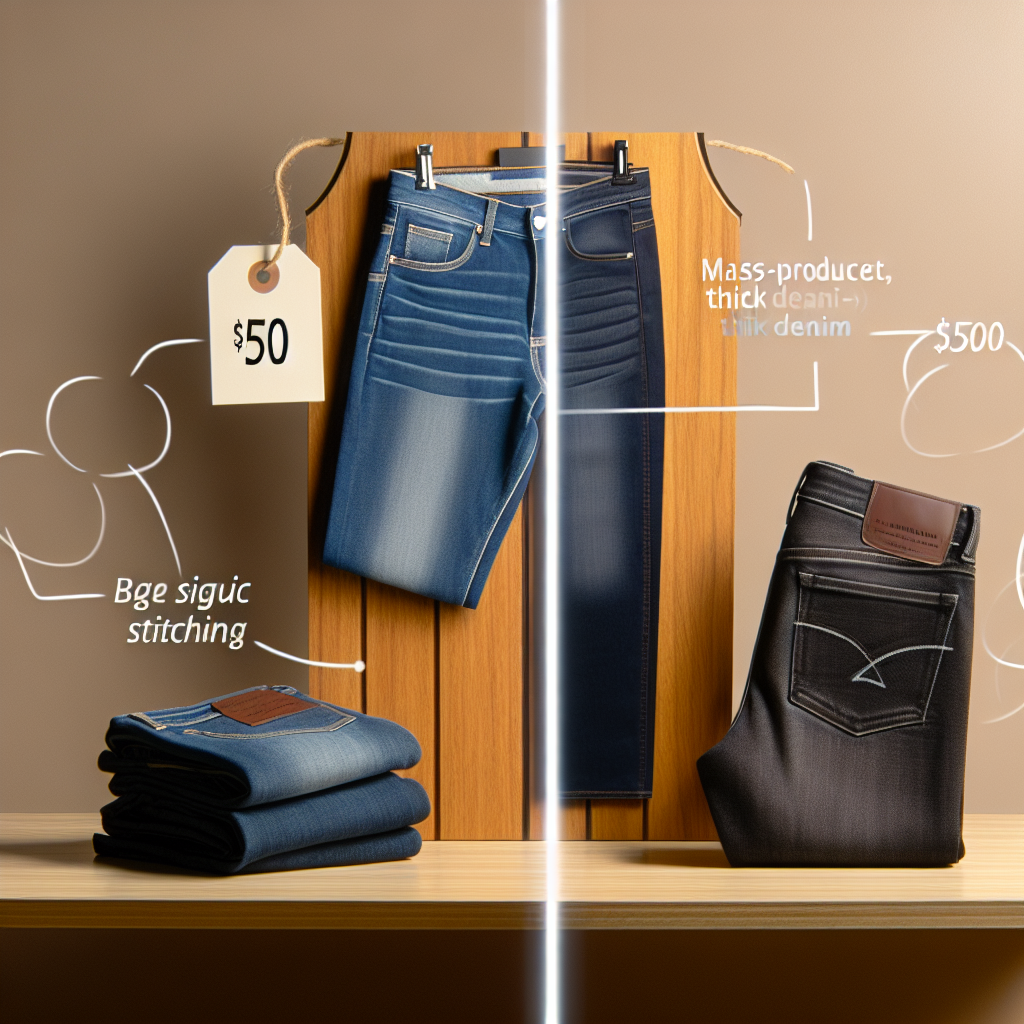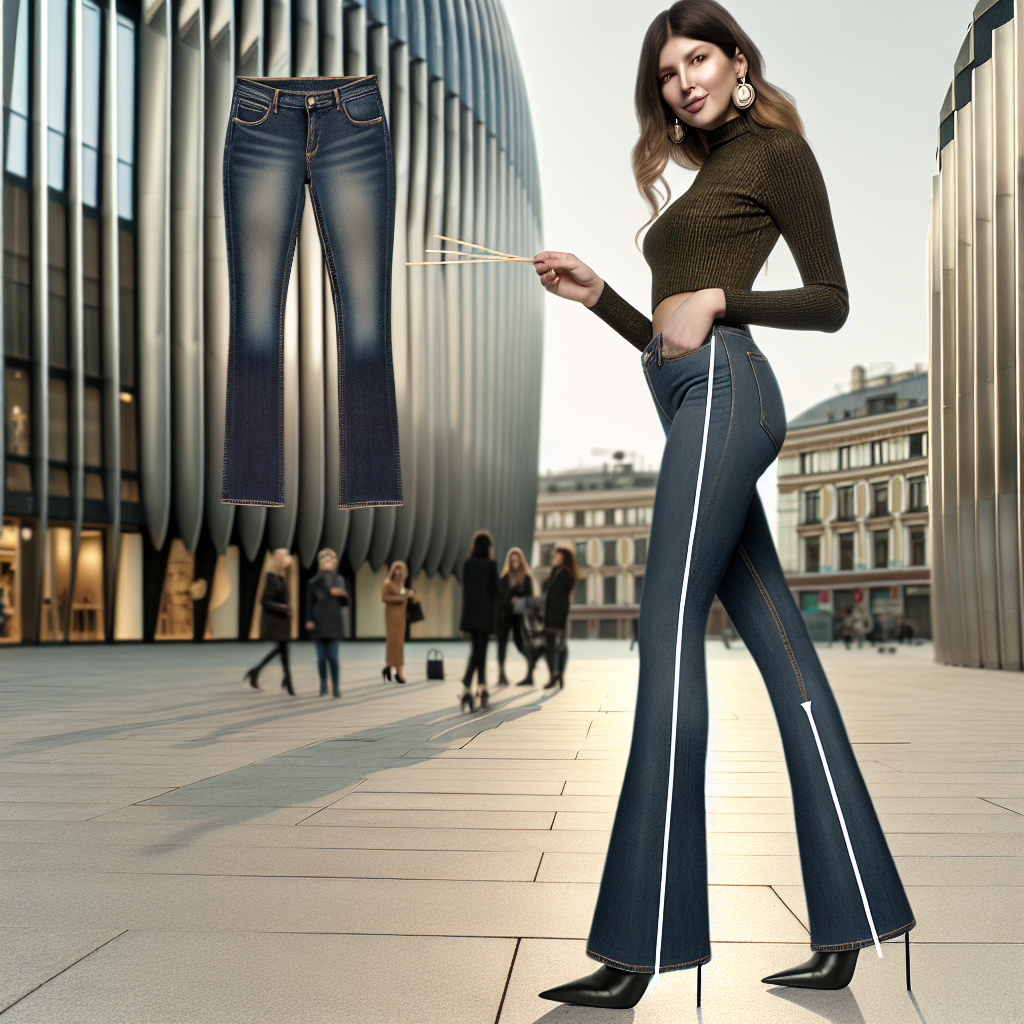The Difference Between $50 Jeans and $500 Jeans – Understanding the Price Tag
When it comes to denim, jeans are a staple in almost every wardrobe. But with prices ranging from an affordable $50 pair to a luxury $500 design, consumers often wonder what exactly justifies such a vast difference in price. While both options may look similar from a distance, the truth is there’s much more than meets the eye. Let’s delve into what sets high-end jeans apart from their budget-friendly counterparts and decide whether splurging on that expensive pair is worth it.
Fabric Quality and Sourcing
One of the most significant differences between $50 and $500 jeans lies in the fabric quality and sourcing. Budget jeans typically use standard cotton blends that include synthetic fibers like polyester or elastane for comfort and stretch. These materials make jeans affordable and easy to produce in mass quantities.
In contrast, premium jeans often feature top-grade cotton, such as Japanese selvedge denim or organic, sustainably sourced cotton. Japanese denim, known for its tight weave and durability, is produced on vintage shuttle looms, which takes more time and craftsmanship. The unique texture, deep dye saturation, and longevity of such materials contribute significantly to the higher cost of luxury denim.
Construction and Craftsmanship
Mass-market jeans are generally produced using automated machinery and are stitched quickly to minimize costs. As a result, these jeans may not offer the best fit, and they often lose their shape after multiple washes.
$500 jeans, on the other hand, are often handcrafted or go through a more intricate construction process. Artisans pay close attention to stitch density, seam placement, and techniques like chain-stitch hemming. Some high-end jeans are even hand-finished, ensuring every pair is unique and carefully examined for quality. This level of precision not only increases production time but also ensures a better fit, feel, and longevity.
Dyeing Techniques and Color Retention
Another substantial difference lies in the dyeing process. Lower-cost jeans are often dyed with less expensive indigo and undergo basic, chemical fading methods to replicate the worn-in look. These methods can lead to uneven coloring and quicker fading over time.
Luxury denim typically undergoes rope dyeing, a time-intensive technique that allows the indigo to penetrate the outer layer of each yarn while leaving the core white. This method enables more natural fading over time and increases the uniqueness of wear patterns. Some premium brands also use eco-friendly dyes and reduce water usage, factoring sustainability into production — another justification for higher pricing.
Fit, Design, and Customization
Cheaper jeans often come in limited styles and standardized sizes that may not accommodate different body shapes well. They’re designed for the masses, which can result in a less tailored appearance and feel.
Premium jeans offer refined, trend-forward styles and numerous fit options. Higher-end brands invest in tailoring expertise to ensure a better fit, enhanced silhouette, and flattering contours. In some cases, customers can even customize elements like pocket styles, stitch colors, or denim finishes — a personalization option rarely available with budget brands.
Brand Prestige and Market Positioning
Of course, part of what you pay for in designer jeans is the brand’s name and market perception. High-end denim lines such as Rag & Bone, Frame, or R13 invest millions in branding, celebrity endorsements, and retail experience. When purchasing from these brands, customers are often buying into a lifestyle or fashion statement, which can justify the markup in pricing.
Budget-friendly brands like Levi’s or American Eagle emphasize accessibility and durability, targeting a broader market without the high marketing overhead. This approach translates into more competitive pricing but less exclusivity.
Sustainability Practices
Sustainability has become a crucial value proposition for luxury denim. Brands that produce $500 jeans often use eco-friendly production practices, like reduced water usage in washing, natural dye treatments, and recycling programs. They may also employ ethical labor practices, paying fair wages and providing safe working environments. These initiatives come at a cost, but align with the values of increasingly conscious consumers.
Meanwhile, fast fashion denim often contributes to overproduction and environmental degradation. Due to low costs and high turnover, these jeans are more likely to end up in landfills after just a few uses, raising questions about their real long-term value.
How Long Each Pair Will Last
One of the most practical ways to assess the value of jeans is longevity. $50 jeans may look good initially, but after several washes, the fabric may stretch out, fray, or fade unevenly. You may find yourself replacing them more often — sometimes more than once per year.
With a quality $500 pair, you’re investing in something that could last for years, and in some cases, decades. The phrase “buy better, buy less” sums up the mindset many consumers adopt when transitioning to luxury denim. While the initial cost is high, the per-wear cost could end up being much lower in the long term.
Final Verdict: Are $500 Jeans Worth It?
The debate between $50 versus $500 jeans ultimately comes down to personal values and lifestyle. If you’re someone who prefers variety and frequent wardrobe changes, affordable denim offers flexibility without breaking the bank. However, if you value quality, sustainability, a perfect fit, and longevity, investing in a premium pair might be worthwhile.
Luxury jeans serve as more than just an outfit staple — they represent craftsmanship, individuality, and responsible fashion choices. While not everyone needs to splurge on expensive denim, understanding what contributes to the price difference allows consumers to make informed purchasing decisions that align with their fashion goals and ethical standards.
Conclusion
Whether you’re shopping at a high-end boutique or a local department store, knowing what goes into the making of your jeans gives you the power to choose wisely. Expensive jeans aren’t just about the price tag, but the story, effort, and sustainability behind each stitch. For some, $50 jeans make more sense. For others, the $500 investment pays off. The best pair of jeans is not necessarily the most expensive, but the one that fits your body — and your values — just right.











